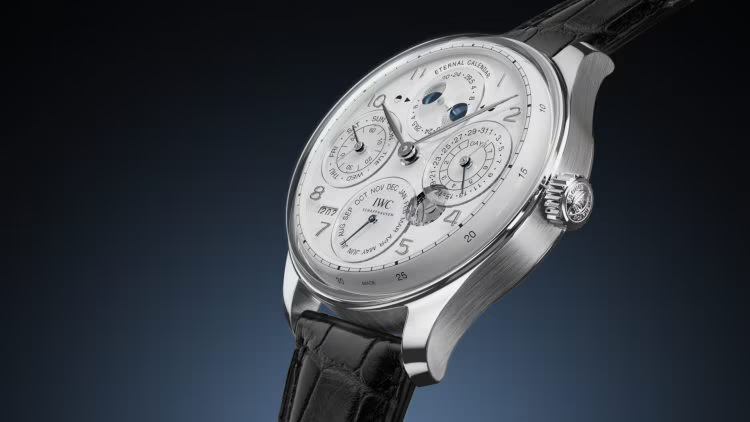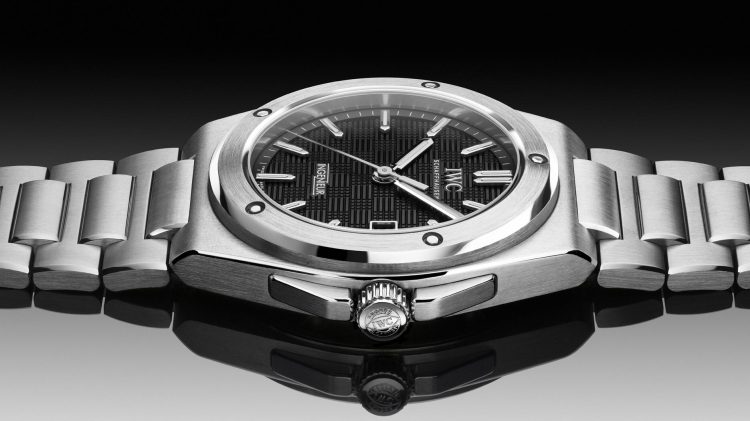Introduction
IWC Schaffhausen, established in 1868 by Florentine Ariosto Jones, has long been recognized as one of the most respected names in luxury Swiss watchmaking. With a commitment to precision, quality, and craftsmanship, IWC has managed to blend traditional watchmaking with modern technological innovations, creating timepieces that are not only visually stunning but also exceptionally reliable.
This article delves into the craftsmanship and technology behind IWC Schaffhausen watches, exploring their renowned movements, materials, design processes, and innovations that define the brand. From the engineering of automatic movements to the use of exotic materials and complicated watchmaking, IWC continues to push the boundaries of what is possible in the world of horology.
1. The Foundation of IWC Schaffhausen’s Craftsmanship
1.1 A Legacy of Precision
IWC’s history is built upon a legacy of precision engineering. The brand’s founder, Florentine Ariosto Jones, was inspired by the idea of combining American manufacturing techniques with Swiss craftsmanship to create more efficient and precise timepieces. His vision gave birth to IWC’s innovative approach to watchmaking, and it remains a cornerstone of the brand’s identity to this day.
IWC’s dedication to precision is reflected in its use of high-quality materials and meticulous attention to detail during every phase of production. The brand’s skilled watchmakers work to exacting standards, ensuring each piece meets the highest possible level of craftsmanship.
1.2 Swiss Engineering Meets Innovation
At the heart of IWC’s craftsmanship is the brand’s commitment to innovative movements and cutting-edge technologies. While IWC remains rooted in traditional Swiss watchmaking techniques, it continually seeks ways to improve and evolve its products, blending artistry with engineering. For IWC, craftsmanship extends beyond the visual appeal of the watch; it is a commitment to the inner workings of the timepiece that sets the brand apart.
2. IWC Movements: The Heart of Precision
2.1 In-House Movements: A Testament to Expertise
One of the standout features of IWC Schaffhausen watches is the use of in-house movements. IWC prides itself on producing the majority of its own movements, each meticulously designed and assembled by skilled watchmakers. By crafting their movements in-house, IWC ensures that every piece of technology is held to the highest standards of quality and reliability.
IWC’s movements are characterized by their precision, durability, and sophistication. Whether it’s the caliber 52010 powering the Portugieser or the caliber 51111 in the Big Pilot’s Watch, each movement showcases the company’s ability to combine engineering brilliance with traditional craftsmanship.
2.2 The IWC Caliber 5000 Series: A Leap Forward in Performance
The IWC Caliber 5000 series is one of the brand’s most important innovations. Introduced in the Portugieser Automatic, this movement features an impressive 7-day power reserve, setting it apart from other movements in its class. The caliber 52010 is a perfect example of IWC’s engineering prowess, boasting a double barrel design that allows for longer power reserve without sacrificing performance or accuracy.
Users and reviewers alike admire the smooth operation and reliability of this movement, which is often regarded as one of the best in the industry. IWC’s decision to design and produce such a powerful movement in-house reflects the brand’s focus on long-lasting performance and precision engineering.
2.3 The Iconic IWC Perpetual Calendar and Other Complications
IWC Schaffhausen is also well-known for producing timepieces with complex complications, including the Perpetual Calendar, moon phase display, and chronograph functions. The Perpetual Calendar, for example, can track the date, day of the week, month, year, and even leap years, all while requiring no manual adjustments for centuries. This type of innovation showcases IWC’s commitment to functional complications that enhance the practicality of their watches.
The IWC Big Pilot’s Watch and Da Vinci collections are both home to intricate perpetual calendar models, offering a combination of sophisticated engineering and elegant design that exemplifies IWC’s craftsmanship.

3. IWC Schaffhausen Materials: Pushing the Boundaries of Durability and Innovation
3.1 Titanium: The Lightweight Revolution
IWC has made significant strides in its use of advanced materials, and titanium is one of the key materials that the brand has embraced. Known for its lightweight yet incredibly strong properties, titanium is used in the construction of cases, bracelets, and even certain movement components in select IWC models. It offers a unique combination of corrosion resistance and strength, making it an ideal material for high-performance watches that need to withstand the rigors of daily wear.
The IWC Ingenieur collection, for instance, is often made with titanium, offering an elegant yet durable option for those who appreciate both strength and lightweight comfort.
3.2 Ceratanium: A Material Like No Other
Another groundbreaking material used by IWC is ceratanium, an alloy that combines the best features of ceramic and titanium. Developed and patented by IWC, ceratanium is incredibly hard and scratch-resistant, yet much lighter than traditional steel. Its matte finish gives the watch a sleek, modern appearance while also providing durability that ensures the watch looks pristine even after years of wear.
The IWC Big Pilot’s Watch Perpetual Calendar in ceratanium is a prime example of this material’s application, providing a timepiece that is not only stunning in design but also incredibly resilient.
3.3 Other Exotic Materials: The Future of Watchmaking
IWC is continuously exploring new materials to enhance the functionality and aesthetic appeal of its watches. The brand has experimented with carbon fiber, diamond-like carbon (DLC) coatings, and high-tech ceramics in its collections, further solidifying its commitment to innovative craftsmanship.
4. IWC Schaffhausen Design: A Perfect Harmony of Aesthetics and Function
4.1 Classic Design Meets Modern Innovation
IWC’s design philosophy revolves around creating timeless yet modern timepieces. The brand is known for its clean, minimalistic dials, often enhanced with Arabic numerals and sleek hands that make for easy readability. IWC watches are designed to be both functional and aesthetically pleasing, with a strong emphasis on legibility and durability.
The Portugieser collection, for example, is widely regarded as one of the most beautifully balanced collections in the world of luxury watches. Its large, easy-to-read dial and elegant case make it an ideal example of IWC’s focus on simplicity without sacrificing sophistication.
4.2 The Pilot’s Watch: Innovation in Military-Grade Design
Another iconic collection by IWC is the Pilot’s Watch series, which was initially designed for aviation professionals. The Big Pilot’s Watch in particular has become an enduring symbol of rugged elegance and precision. With features such as large crowns, easy-to-read dials, and luminescent hands, these timepieces reflect the brand’s ability to blend innovative technology with a robust design that is equally at home in the cockpit or on the wrist of a discerning collector.
5. IWC Schaffhausen: A Leader in Watchmaking Technology
5.1 The Schaffhausen Manufacture: A Center for Innovation
At the heart of IWC’s watchmaking process is the Schaffhausen Manufacture, where the brand’s innovative timepieces are created. This state-of-the-art facility is home to a highly skilled team of watchmakers, engineers, and technicians who work together to develop and refine IWC’s exceptional movements and designs. The integration of traditional Swiss techniques with cutting-edge technology is what makes IWC a leader in horology.
5.2 IWC’s Focus on Sustainability and Innovation
In recent years, IWC has also made strides toward becoming more sustainable in its manufacturing processes. By investing in eco-friendly materials, energy-efficient practices, and a carbon-neutral manufacturing process, IWC is positioning itself as a forward-thinking brand in the luxury watch industry, committed to reducing its environmental impact without compromising the quality of its timepieces.
Conclusion: The Timeless Craft of IWC Schaffhausen
IWC Schaffhausen has proven time and again that it is a master of both craftsmanship and innovation. With a rich history of **precision
engineering** and a commitment to pushing the boundaries of watchmaking technology, IWC continues to produce timepieces that embody both tradition and progress.
From its in-house movements to its use of cutting-edge materials and designs that blend form with function, IWC Schaffhausen remains one of the most highly respected brands in the world of luxury watches. For collectors and watch enthusiasts alike, an IWC timepiece represents the perfect balance of innovation, precision, and artistry.





































